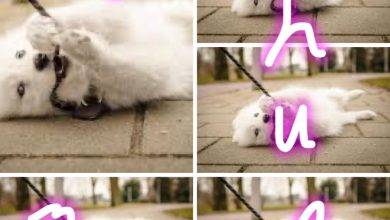How many bladders do dogs have? Care to Know?

Dogs are amazing creatures with unique and interesting anatomy: But Have you ever wondered how many bladders your dog has? It’s not an unusual question, considering dogs have some unique anatomy that sets them apart from humans. As a pet owner, understanding your dog’s urinary system is crucial for keeping them healthy and happy. In this article, we’ll explore the number of bladders dogs have and some interesting facts about their bladder anatomy. So, let’s dive in and learn more about our furry friends’ fascinating bodies!
The Urinary System in Dogs
Before we dive into dog bladders, let’s take a quick look at the urinary system in dogs. The urinary system comprises of the kidneys, ureters, bladder, and urethra.
once the waste products have traveled through the ureters, they arrive at the bladder, a muscular sac located in the pelvic area. The bladder is responsible for storing urine until it’s time for the dog to eliminate it. Finally, the urine passes through the urethra and out of the body.
Here’s an interesting story – my neighbor once adopted a rescue dog that had been suffering from severe bladder problems. The dog had been mistreated by its previous owners, leading to a urinary tract infection and bladder stones. After a few visits to the vet, the dog was diagnosed with bladder stones and had to undergo surgery to remove them.
Understanding the urinary system is essential for detecting and preventing urinary tract infections, bladder stones, and other health issues that can arise in dogs. Regular vet check-ups, proper hydration, and a healthy diet can all help maintain your furry friend’s urinary system health.
How many bladders do dogs have?
Dogs, like humans, have a single bladder that stores urine until it is excreted from the body. The bladder size varies according to the size and breed of the dog. Dogs, contrary to popular belief, do not have many bladders. A healthy bladder is critical to the overall health and well-being of your dog.
Understanding Dog Bladders
The bladder is a hollow, muscular organ that sits in the pelvic area of the dog. It’s responsible for storing urine until it’s expelled from the body. When the bladder is full, it sends a signal to the dog’s brain that it’s time to urinate.
The bladder’s size varies depending on the size and breed of the dog. For example, a small dog may have a bladder that can hold up to 10 ounces of urine, while a large dog’s bladder can hold up to two liters of urine.
Despite some misconceptions, dogs only have one bladder, just like humans. The idea that dogs have multiple bladders may stem from the fact that the bladder has several compartments called diverticula.
These diverticula are small pouches that protrude from the main body of the bladder. They help the bladder expand and contract as it fills and empties.
Is there a difference between male and female urinary bladder?
While both male and female dogs have one bladder, there are some differences between the two. In male dogs, the bladder is located in front of the rectum, while in female dogs, it’s located below the rectum and above the vagina. This difference in location can affect the diagnosis and treatment of bladder-related problems.
The Role of the Bladder in Dog Health
The bladder plays a crucial role in maintaining your dog’s health. A healthy bladder ensures that your dog can eliminate waste products from their body efficiently. A dysfunctional bladder can cause various health issues, such as urinary tract infections, bladder stones, and incontinence.
That’s why it’s important to keep a close eye on your dog’s bathroom habits and take them to the vet if you notice any changes or signs of discomfort. Symptoms of bladder issues in dogs can include frequent urination, difficulty urinating, blood in the urine, and accidents inside the house.
Preventing bladder problems in dogs can be as simple as ensuring they have access to clean water at all times, feeding them a healthy diet, and taking them for regular walks to encourage them to urinate.
Additionally, certain breeds are more prone to bladder issues, such as Dalmatians and Miniature Schnauzers, so it’s essential to be extra vigilant if you own one of these breeds.
By understanding the importance of a healthy bladder and taking preventative measures, you can help ensure that your furry friend remains happy and healthy for years to come. Remember, a healthy bladder means a happy dog!
How much pee can a dogs bladder hold and how to know when it’s full
Are wondering how much pee a dog’s bladder can hold? Well, it actually depends on a few factors, like their size, age, and hydration level. Typically, a healthy adult dog’s bladder can hold anywhere between 0.5 to 2 cups (120 to 480 ml) of urine.
Now, how can you tell if your pup’s bladder is full? Pay attention to their behavior. They may become restless, whiny, or pace around when they need to pee. You may also notice them scratching or pawing at doors, windows, or other surfaces as a way of signaling they need to go outside.
If you suspect your dog’s bladder is full or they are exhibiting any unusual behavior, take them outside to see if they need to relieve themselves. And if you have any concerns about your furry friend’s bathroom habits or bladder health, be sure to reach out to your vet for expert advice and care. After all, a happy, healthy dog is a great companion for life!
Symptoms of Bladder Problems in Dogs
As a pet owner, it’s essential to keep an eye out for symptoms of bladder problems in your dog. Some common signs of bladder problems include:
Frequent urination
Straining to urinate
Blood in urine
Urinating in unusual places
Licking around the genital area
Caring for Your Dog’s Bladder Health
There are several ways to care for your dog’s bladder health. Make sure your dog has access to fresh, clean water at all times, and take them for regular bathroom breaks.
If you notice any signs of bladder problems, take your dog to the vet immediately. Your vet may recommend a special diet, medication, or surgery, depending on the severity of the problem.
How much pee can a dogs bladder hold and how to know when it’s full
Are wondering how much pee a dog’s bladder can hold? Well, it actually depends on a few factors, like their size, age, and hydration level. Typically, a healthy adult dog’s bladder can hold anywhere between 0.5 to 2 cups (120 to 480 ml) of urine.
Now, how can you tell if your pup’s bladder is full? Pay attention to their behavior. They may become restless, whiny, or pace around when they need to pee. You may also notice them scratching or pawing at doors, windows, or other surfaces as a way of signaling they need to go outside.
If you suspect your dog’s bladder is full or they are exhibiting any unusual behavior, take them outside to see if they need to relieve themselves. And if you have any concerns about your furry friend’s bathroom habits or bladder health, be sure to reach out to your vet for expert advice and care. After all, a happy, healthy dog is a great companion for life!
Conclusion
In conclusion, dogs have one bladder with several compartments called diverticula. Understanding the anatomy and function of the bladder is crucial for maintaining your dog’s health.
Keep an eye out for any signs of bladder problems and seek veterinary care immediately if you notice any symptoms. With proper care, you can help ensure that your furry friend’s bladder stays healthy and functional for years to com




